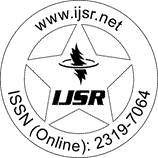Downloads: 0 | Views: 319
Analysis Study Research Paper | Medicine | Moldova | Volume 12 Issue 5, May 2023 | Popularity: 4.8 / 10
New Aspects in the Treatment of Intracranial Hypertension Syndrome
Golban Lidia Valentin
Abstract: Introduction: There are numerous pathologies that affect the central nervous system (CNS) with the onset of intracranial hypertension syndrome (IHC), so the quality of life of these patients largely depends on drug treatment. The purpose of the article was to study and analyze the specialized literature with the argumentation of the groups of preparations administered in SHIC, the principles of action of each group and their effectiveness. Material and methods: It is a review of articles from the last 10 years, using medical sites such as PubMed, Medscape, NCBI, Med bullets. Results: SHIC is a pathology that triggers various functional disorders, manifested by headaches, visual disturbances, nausea and vomiting. Drug treatment in SHIC is poor and mostly dependent on the triggering factor of intracranial hypertension (ICH), thus the first place in the treatment of SHIC is occupied by diuretics such as: acetazolamide, furosemide, topiramate, mannitol, etc. The administration of these preparations is justified by the effects obtained after administration (diuretic, antiepileptic, antiglaucoma, carbonic anhydrase inhibitors from the choroid plexus). Conclusions: The results of this study confirm that diuretic therapy is clearly superior in the treatment of SHIC. Indications for treatment depend on the morphological substrate that is the basis of SHIC, on the patient's comorbidities, this requires an individualized approach, according to international standards aimed at correlating the risk/benefit ratio.
Keywords: Nervous system, intracranial hypertension syndrome, intracranial pressure, diuretics
Edition: Volume 12 Issue 5, May 2023
Pages: 1236 - 1238
DOI: https://www.doi.org/10.21275/SR23512012044
Make Sure to Disable the Pop-Up Blocker of Web Browser
